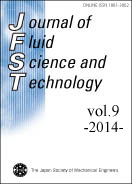Volume 9, Issue 1
Displaying 1-11 of 11 articles from this issue
- |<
- <
- 1
- >
- >|
Papers
-
2014 Volume 9 Issue 1 Pages JFST0001
Published: 2014
Released on J-STAGE: January 24, 2014
Download PDF (238K) -
2014 Volume 9 Issue 1 Pages JFST0002
Published: 2014
Released on J-STAGE: January 24, 2014
Download PDF (1487K) -
2014 Volume 9 Issue 1 Pages JFST0003
Published: 2014
Released on J-STAGE: January 24, 2014
Download PDF (1669K) -
2014 Volume 9 Issue 1 Pages JFST0004
Published: 2014
Released on J-STAGE: February 12, 2014
Download PDF (735K) -
2014 Volume 9 Issue 1 Pages JFST0005
Published: 2014
Released on J-STAGE: March 20, 2014
Download PDF (1313K) -
2014 Volume 9 Issue 1 Pages JFST0006
Published: 2014
Released on J-STAGE: April 16, 2014
Download PDF (3564K) -
2014 Volume 9 Issue 1 Pages JFST0007
Published: 2014
Released on J-STAGE: May 12, 2014
Download PDF (1618K) -
2014 Volume 9 Issue 1 Pages JFST0008
Published: 2014
Released on J-STAGE: May 28, 2014
Download PDF (1569K) -
2014 Volume 9 Issue 1 Pages JFST0009
Published: 2014
Released on J-STAGE: June 05, 2014
Download PDF (1641K) -
2014 Volume 9 Issue 1 Pages JFST0010
Published: 2014
Released on J-STAGE: June 18, 2014
Download PDF (802K) -
2014 Volume 9 Issue 1 Pages JFST0011
Published: 2014
Released on J-STAGE: June 20, 2014
Download PDF (1095K)
- |<
- <
- 1
- >
- >|
